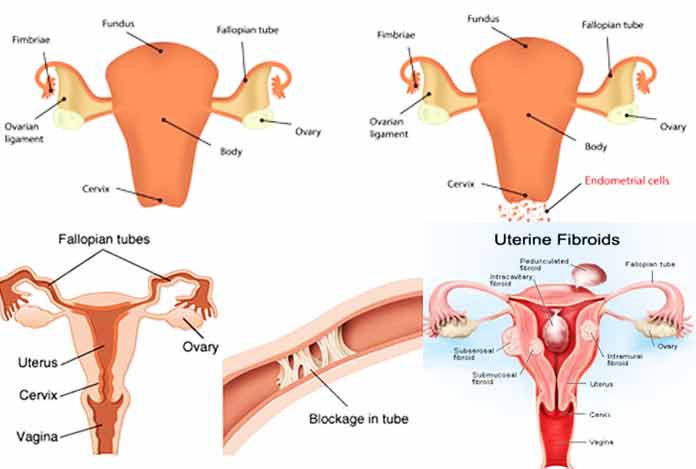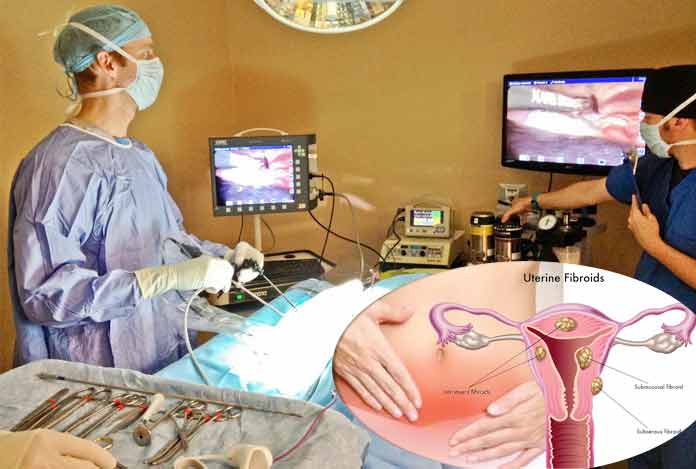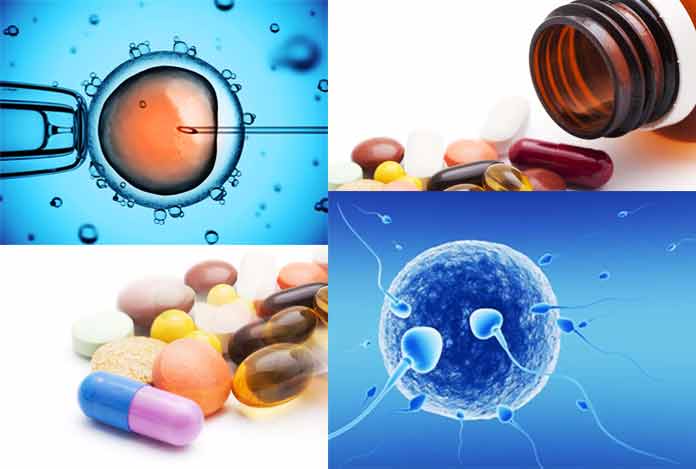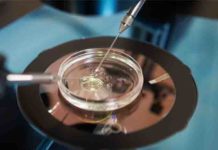
Infertility affects around 15-20% of couples. A couple is considered as infertile if they have not been able to reproduce or conceive over a time span of one year after regular and unprotected sex. When the cause of infertility is specific to the female partner, it is known as female infertility.
Female infertility accounts for about half of the cases of infertility. Female infertility affects around 48 million women globally. The highest prevalence of female infertility is in South Asia, Central Asia, Central Europe and North Africa.
The main sign of infertility is not being able to get pregnant. A very long menstrual cycle or a too short one, or missed or absent periods may signify ovulation is not taking place.
Symptoms of Female Infertility
Some symptoms of female infertility are discussed below:
- Irregular Periods: Average menstrual cycle is of 28 days. A woman having a few days up or down may be considered as having normal periods till the time she is having consistent periods. However, if the cycles vary greatly, then it is a matter of concern. This can be related to PCOS, or hormonal issues, both of which can lead to infertility.
- Painful or Heavy Periods: Many women get cramps while they get their periods. Painful periods can interrupt with daily life and it may signify endometriosis.
- Absent Periods: Women may have periods of no menstruation, which may be due to stress or she may be working out heavily. You must get your fertility checked if you do not get periods.
- Hormonal Fluctuations: As a result of hormonal imbalance, which may lead to infertility, you may experience skin issues, decreased libido, appearance of facial hair, hair thinning and weight gain.
- Pain While Having Sex: Some people may experience pain while having sex, and they feel it is normal. However, it could be telling you that you may have an underlying condition like endometriosis.
- Reduced Sex Desire: Changes in libido and sex desire could be observed.
- Unnecessary Hair Growth: Hair might grow on lips, chest and chin.

Causes of Female Infertility
Common causes of female infertility are discussed below:
- Damaged Fallopian Tubes: These tubes carry eggs from the ovaries to the uterus, where development of the baby happens. These structures may get damaged as scars occur due to pelvic infections, pelvic surgery or endometriosis.
- Hormonal Issues: Pregnancy may not be occurring as the body may not be going through the hormonal changes that help release eggs from the ovary.
- Cervical Problems: There may be a condition in which sperm may not be able to pass through the cervical canal.
- Problems in Uterus: There may be presence of polyps and fibroids that can interrupt pregnancy. These fibroids and polyps happen as some cells grow in the lining of the uterus.
- Infertility with No Exact Cause: For around 20% of the cases, infertility remains unexplained.

Tests for Female Infertility
You may be asked to go through a number of tests including blood test for checking the levels of hormones and biopsy of the endometrial area to study the uterine lining. The following tests may be recommended:
- Hysterosalpingography (HSG): In this procedure, ultrasound or X-ray of the reproductive organs is done. Dye or saline is injected in the cervix, which moves through the fallopian tubes. This can be used to check if tubes are blocked.
- Laparoscopy: A small cut is made near the belly through which a tube having a tiny camera is inserted inside. This gives a view of the uterus, fallopian tubes and ovaries, and it can be seen if there are any abnormal growths.

Cure for Female Infertility
Following treatment methods are available to cure female infertility:
- Hysteroscopy: In this procedure, hysteroscope is placed in the uterus via the cervix. This works by removing fibroids and polyps and opens up blocked tubes.
- Laparoscopy: If you are suspected to have tubal or pelvic disease, you can get surgery done for the reconstruction of reproductive organs. A laparoscope is inserted through a cut in the belly button to do away with scars, treat endometriosis, open blocked tubes and remove cysts that have been formed in the ovaries.
- Medicines: When you are facing ovulation problems, you may be asked to go for prescription drugs like clomiphene citrate, letrozole and gonadotropins. These drugs work to get a woman pregnant by making the ovaries release multiple eggs. In case of unexplained infertility or in cases, where other treatment methods have failed, the doctor may ask try gonadotropins. Another medicine is metformin, which helps in normal ovulation.
- Intrauterine Insemination: It involves putting a sperm inside a woman’s uterus to facilitate fertilization. The aim of this treatment is to bring about an increase in the number of the sperms that reach fallopian tubes and boost the chances of fertilization.
- In Vitro Fertilization (IVF): It is the process of fertilization in which eggs are extracted, a sample of sperm is retrieved and then, the egg and sperm are combined in a lab dish. Thereafter, the embryo is transferred to the uterus with the help of a device, called intrauterine insemination catheter.
- Intracytoplasmic Sperm Injection (ICSI): It involves direct injection of sperm in the egg in a dish and then, embryo is placed in the uterus.
- Gamete Intrafallopian Tube Transfer (GIFT) and Zygote Intrafallopian Transfer (ZIFT): These procedures are similar to IVF. In this, the egg is retrieved and is combined with sperm in the lab dish and is transferred back to the uterus.
- Egg Donation: This can work for you if your ovaries do not function correctly, but your uterus is normal. In this procedure, eggs are removed from the ovary of a woman, who has ingested fertility drugs. After IVF, fertilized eggs get transferred to the uterus.











